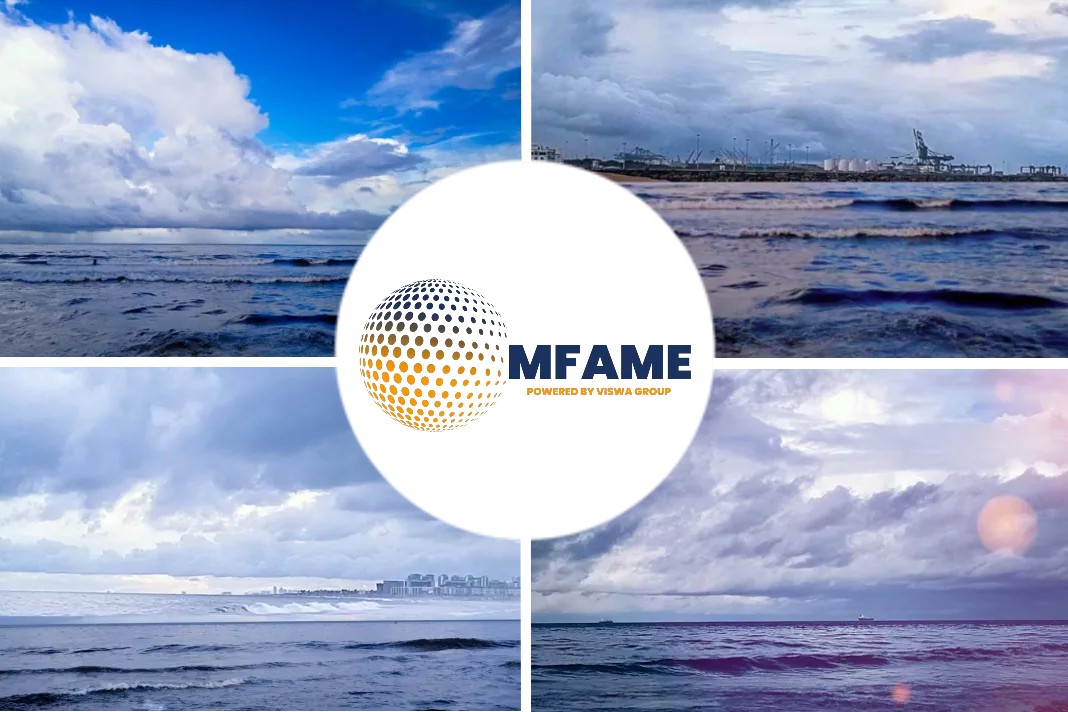US sanctions on Chinese state-owned company COSCO Dalian Tanker Shipping are threatening to disrupt long-term trade flows from Malaysia, Indonesia and Australia to the world’s second largest LNG importer, and raising prompt charter demand and freight rates, reports Platts.
Ship tracking data: Freight rates and shipping demand
Several vessels delivering LNG as part of long-term contracts from Indonesia’s Tangguh, Malaysia’s Bintulu and Australia’s North West Shelf, worth nearly 9 million mt/year of LNG, to state-owned CNOOC’s LNG terminals in China are impacted by the sanctions.
This is in reference to sources close to COSCO Dalian, and S&P Global Platts ship tracking software cFlow.
This has resulted in a spike in prompt shipping demand and freight rates, with Platts Asia Pacific LNG shipping rates rising to $88,000/day Wednesday, up 12.8% from $78,000/day, while Chinese sources pointed to further upward pressure on freight costs.
“Freight rates for LNG vessels have now gone up to around $100,000/day, double from around $50,000/day before the sanctions,” said a source with one of the charterers.
“We have not decided whether to replace these vessels or buy additional spot cargoes from the market to meet our requirement,” the source said, adding that they are still in talks with COSCO Dalian on how to minimize the impact of the sanctions.
Three of the COSCO Dalian-owned LNG tankers impacted by the sanctions, Dapeng Sun, Dapeng Moon and Dapeng Star, deliver term volumes from Australia’s NWS to CNOOC’s Guangdong Dapeng LNG terminal, according to cFlow.
LNG trading sources said another two LNG vessels, Min Rong and Min Lu, delivering term Tangguh LNG volumes to CNOOC have been rejected because of the sanctions.
A sixth vessel, Shen Hai, delivering Bintulu LNG term volumes to CNOOC’S Yangshan terminal, has also been impacted.
COSCO Dalian and CNOOC were not available for comment.
Winter demand concerns
There were concerns on whether shipping disruptions would affect China’s LNG requirements during the peak winter demand season, which has already been hit by the unplanned shutdown of PetroChina’s Rudong LNG terminal after a typhoon hit the facility on September 22.
Trading sources have said Rudong is unlikely to resume operations before the end of October, which would extend the shutdown into the start of the winter purchasing season, Platts previously reported.
Some of the cargoes are currently being diverted to PetroChina’s two other LNG terminals, sources close to the matter said.
“CNOOC still has many mid- and short-term LNG contracts in hand which are expected to cover some of the supply shortages,” a Beijing-based LNG trader said, but it will not be easy for CNOOC to replace so many term-chartered vessels in such a short time.
Another China-based source noted the incident may discourage buying interest from some Chinese importers due to surging freight rates.
The US government late September imposed sanctions on two COSCO affiliates, COSCO Shipping Tanker (Dalian) and COSCO Shipping Tanker (Dalian) Seaman & Ship Management for allegedly transporting Iranian oil.
COSCO Shipping Tanker (Dalian) has a 50% stake in its subsidiary China LNG Shipping (Holdings) Limited.
The six LNG vessels are owned by China LNG Shipping International Co. Ltd., which is a joint venture between China LNG Shipping (Holdings) Ltd. and CETS Investment Management (HK) Co. Ltd.
The US sanctions have already impacted oil tanker rates, with VLCC day rates touching $120,000/day on the Persian Gulf to North Asia routes, its highest in four years.
LNG carriers dedicated to the Yamal LNG terminal in Russia, with part-ownership under COSCO’s sanctioned affiliates have also been affected.
COSCO Shipping is one of the biggest LNG shipping companies in China, owning and operating 30 LNG vessels with a total shipping capacity of more than 5 million cu m.
Sharp increase in shipping demand
Demand for shipping has increased, partly driven by the sanctions, with Platts’ Atlantic and Pacific rates increasing to $88,000/d, amid low supply and stronger demand.
In the Pacific, only one cold tri-fuel diesel electric, or TFDE, tanker was available for loading from now until the second half of November, with LNG shipping sources pointing to the Cape Ann LNG carrier.
CNOOC Fujian was seeking two ships for Tangguh spot loads earlier this week, one for October 18 and a second for October 25, for a fixed period of eight days, with an optional six days, LNG trading sources said.
However, the prompt nature of these ship inquiries meant the requirements were difficult to supply into, traders said.
CNOOC issued a spot vessel requirement for December 10-14 loading from Indonesia’s Bontang for a charter length of 6-16 days, while Guangdong LNG was seeking three steam ships for charter from the fourth quarter of 2019 to first quarter of 2020, LNG trading sources said.
Did you subscribe to our daily newsletter?
It’s Free! Click here to Subscribe!
Source: Platts

















